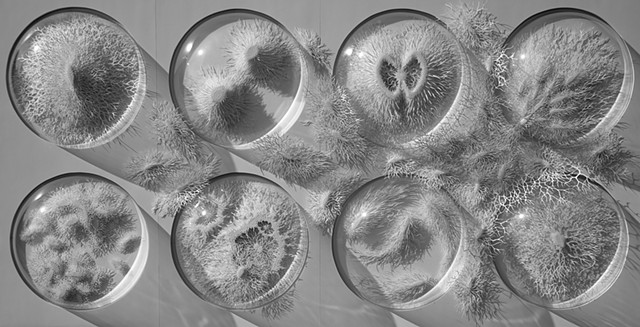“To see a World in a Grain of Sand"
(William Blake)
My work exists at the intersection of science fact and science fiction — a space where imagination and empirical inquiry meet and merge.
Inspired by the sweeping narratives of scientific discovery and innovation that shape our contemporary world, my art represents the perspective of an outsider — a non-scientist striving to visualize, comprehend, and internalize these evolving paradigms. Whether exploring our shifting perception of microbial life or grappling with the conceptual revolutions of quantum physics, my pieces reflect an attempt to assimilate new ways of seeing and understanding nature.
I choose paper cutting as my medium for its simplicity and accessibility — transforming an everyday material into intricate, layered structures. This metamorphosis mirrors the way science reshapes our view of the familiar, rendering the mundane astonishing. The act of cutting becomes a metaphor for revelation: a dissection of perception itself.
A recurring theme in my work is the inherent tension between science's drive to categorize and contain, and nature's overwhelming complexity. The abundance of data, the chaotic diversity of organic forms — these defy reduction. I express this through an excess of detail, aiming to overload the eye and echo the boundless intricacy of the natural world.
Process and material are central. My hand-cut works, created with a scalpel over months, mimic the slow rhythms of natural processes — growth, decay, regeneration. In contrast, my laser-cut pieces test the boundaries of machine precision and material resilience, pushing both toward failure to explore their limits.
Paper, my chosen medium, embodies nature's paradoxes: fragility and strength, delicacy and resilience. There’s a poetic symmetry in reclaiming this forest-born material — cutting it again, layer by layer — to return it, metaphorically, to its organic origins.
